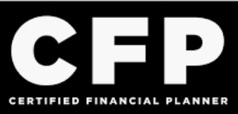
5 Steps to Reduce the Cost of Small Business Retirement Plans
Small business retirement plans can come with a lot of costs if you’re not careful, and that can eat into both your business’ bottom line and your retirement savings. Still, if you’re thinking of setting up a retirement plan for your small business, you’re making a wise decision. Providing for the future retirement of yourself and your employees is beneficial for everyone. And, fortunately, there are five simple steps you can take to reduce small business retirement plan costs today to maximize the benefits of these plans tomorrow.
1. Claim the startup costs tax credit
Starting your small business retirement plan can come with some initial costs, which can deter business owners from even beginning the process. But what many don’t know is that there’s a tax credit you can claim for small business retirement startup costs.
The credit is for up to $5,000, and goes towards offsetting the cost of starting a SEP, SIMPLE IRA or qualified plan (like a 401(k) plan.) You qualify if your business has 100 or fewer employees and has at least one participant who is not a highly-compensated employee. The costs you can claim the credit include the costs of setting up the plan and educating employees about the new plan options. And if you include an auto-enrollment feature in your plan as well, you can claim an additional $500 tax credit per year for three years.
2. Use a matching contribution or profit-sharing plan
Offering matching contributions is a wise choice for many employers. Because you can deduct the amount you contribute from your taxes (more info on that coming up below), it’s less expensive than offering higher salaries. Plus, these plans can increase employee retention because they offer value to employees while keeping your own costs low. Contributing to the retirement plans of your employees tells them you value their work and want to help them be financially secure in their retirement.
A profit-sharing plan not only enables business owners to make significant contributions toward their own retirement, but also allows business owners to adjust the amount of contributions they make to employee accounts each year. This preserves a degree of flexibility for employers whose businesses might vary in profitability year over year and need to reduce costs in leaner years. Plus, some profit sharing plan variations permit the employer to more highly reward longer tenured or more productive employees, increasing retention and decreasing the costs of hiring and training new team members.
3. Take deductions for contributions
Matching employee contributions to retirement plans is beneficial for your employees, but it’s also good for your business. You can deduct the contributions you make to your employee’s SEP or SIMPLE IRA or profit-sharing accounts from your taxes, which can help reduce the costs of your retirement plan. Offering retirement plan contributions instead of increasing salaries helps reduce the taxes you owe while still rewarding employees for their hard work and dedication to your business. Plus, you can contribute different amounts each year depending on your financial results.
For SIMPLE IRA plans, business owners can contribute up to 2% of an employee’s salary up to $285,000 in 2020, or match employees’ contributions that are up to 3% of an employee’s salary. For SEP IRA plans, employers can contribute up to 25% of an employee’s compensation or $58,000, whichever is lesser. Profit-sharing plan contributions are income-tax deductible and also not subject to Social Security or Medicare taxes. This makes them a highly efficient way to lower your business’s tax burden while helping employees save for the retirement of their dreams.
4. Select a cost-effective plan
Not all small business retirement plans are created equally. High fees for various types of 401(k) plans and other retirement plans can eat into the returns your employees get and also increase the costs your business is responsible for when administering the plan. That’s why it’s essential to choose a cost-effective plan with minimal fees when you’re creating your retirement benefits and plan. While the plan fees might seem small, over time they can add up significantly and put a serious dent in your retirement savings.
One great option for keeping costs low for small business owners is the SEP (Simplified Employee Pension) IRA plan. There are no setup fees or annual charges for these plans, and they’re easy to set up and maintain. Do note, however, that you’re required to contribute the same percentage to employees as you contribute to yourself each year, which can increase your costs if you’re looking to save significant amounts for your own retirement.
5. Outsource your benefits management
If you’re looking to offer a 401(k) plan to the employees of your small business, there are complications and costs that come along with these benefits. You want to offer your employees the best plan possible, but you’re also on the hook for extensive record-keeping and fiduciary responsibility for the plan itself.
These responsibilities can come with significant costs to your business, not to mention additional stress. That’s why many small businesses opt to outsource their retirement benefits management to third-party providers. To ensure you’re getting the most value from your benefits partner, be sure to research carefully and choose one with high-quality offerings and transparent costs.
Key Takeaways
Setting up retirement plans for small businesses used to be a very complicated and expensive affair – there just weren’t many good options on the market. But these days there are plenty of great choices that offer flexibility to fit the needs of your unique business. Setting up a small business retirement plan doesn’t need to be expensive, as long as you do your research and choose your plan carefully.
But as a business owner, you already have a lot on your plate. That’s why it can be beneficial to work with a Certified Financial Planner® who can help you choose the plan that’s right for your retirement goals, your business, and your employees.
The financial professionals at 3 Financial have years of experience helping small business owners navigate the legal and financial landmines of retirement plan sponsorship, while also maximizing benefits.
From her base in Honolulu, Joanna Amberger, owner of 3 Financial, helps business owners uphold their fiduciary duty to employees. Amberger is required by law to act in the best interest of her clients and has the industry knowledge required to do so effectively and tax efficiently.
Choosing a retirement plan for your small business is a pretty big task – and it’s one you shouldn’t undertake alone. Get the right financial help and guidance to pick a plan with the maximum benefit and minimum risk for you and your business by contacting us today.
Disclosure: 3 Financial Group and its affiliates do not provide tax, legal, or accounting advice. This material has been prepared for informational purposes only and is not intended to provide, and should not be relied upon for, tax, legal, or accounting advice. You should consult your own tax, legal, and accounting advisors before engaging in any transaction.


